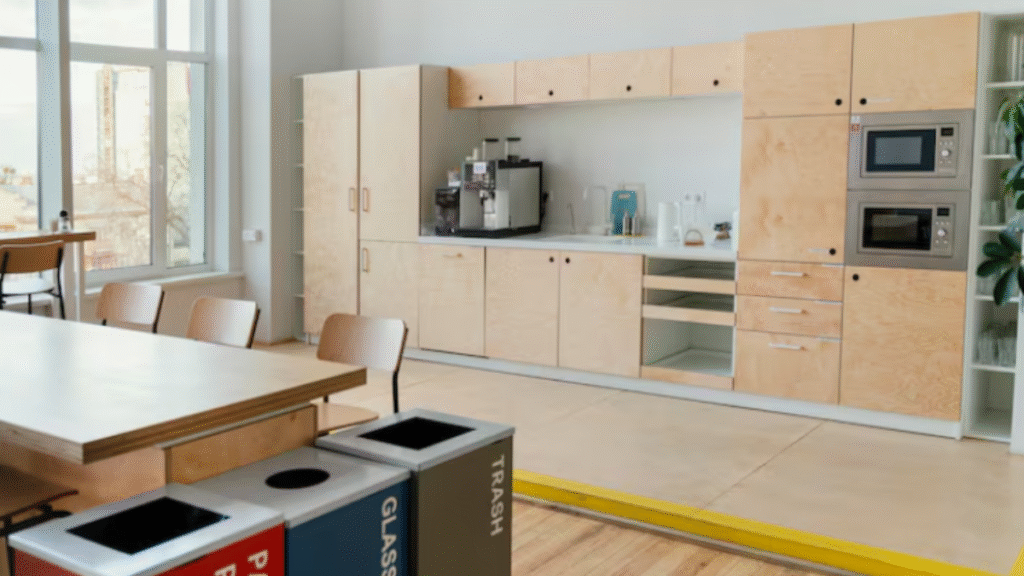The kitchen has always been the heart of every home—a place where meals are prepared, families gather, and memories are made. Over time, however, even the most beloved kitchens can begin to feel outdated, inefficient, or cramped. Whether due to changing design trends, evolving family needs, or the desire for better functionality, kitchen remodeling provides an opportunity to breathe new life into one of the most essential spaces in a home. A well-planned remodel goes far beyond new countertops and cabinets; it reimagines the entire cooking and dining experience.
Kitchen remodeling combines creativity, functionality, and craftsmanship to achieve a space that reflects both personal style and modern living standards. It allows homeowners to tailor layouts, materials, and features to create a kitchen that is both beautiful and practical. From design inspiration to budgeting and material selection, understanding each stage of the process ensures a successful outcome that enhances comfort, efficiency, and long-term value.
Why Homeowners Choose to Remodel Their Kitchens
Kitchens are high-traffic spaces that naturally show signs of wear over time. Cabinets fade, countertops stain, and layouts that once felt efficient may now seem restrictive. For many, remodeling becomes the best way to address these issues while adapting the space to new technologies, family structures, and design preferences.
A remodeled kitchen can improve daily life in numerous ways. It can increase storage capacity, enhance workflow, and make the area more inviting for social gatherings. Moreover, it can significantly increase property value. Among all home renovation projects, kitchen remodels consistently provide one of the highest returns on investment because they directly influence how potential buyers perceive a home’s overall quality.
Planning a Successful Kitchen Remodeling Project
The foundation of every successful kitchen remodel lies in thoughtful planning. Without a clear vision and organized approach, even the best ideas can quickly become overwhelming.
- Define Your Goals
Before starting, identify the reasons behind the remodel. Are you looking for a more open layout, upgraded appliances, or improved aesthetics? Setting priorities helps guide every decision, from layout design to material selection. - Establish a Realistic Budget
Budgeting is one of the most critical aspects of kitchen remodeling. It determines the scope of work, choice of materials, and the professionals you can hire. A detailed budget should include construction costs, materials, permits, and a contingency fund for unexpected expenses. Allocating around 10–20% for contingencies ensures financial flexibility if issues arise during the renovation. - Work with Qualified Professionals
Hiring experienced contractors, designers, and architects is essential for ensuring quality results. Professionals not only handle technical details such as plumbing, wiring, and structural modifications but also offer creative design insights. They can help balance aesthetics, functionality, and safety within your budget. - Create a Design and Layout Plan
Functionality is at the core of any good kitchen design. Common layout styles include the L-shaped, U-shaped, galley, and open-concept designs. The goal is to establish an efficient “work triangle” between the sink, refrigerator, and stove. This concept minimizes movement and improves workflow. - Obtain Necessary Permits
Depending on the scope of work, structural changes and electrical or plumbing updates may require permits. Ensuring compliance with building codes prevents future complications and ensures that all work is performed safely and correctly.
Design Elements That Define a Modern Kitchen
Design trends in kitchen remodeling evolve constantly, blending functionality with artistic expression. Homeowners can choose from timeless classics or bold modern designs depending on their preferences.
- Cabinetry and Storage Solutions
Cabinets play both a functional and aesthetic role. Modern cabinetry emphasizes clean lines, soft-close mechanisms, and efficient storage solutions such as pull-out drawers, lazy Susans, and built-in organizers. The finish—whether woodgrain, matte, or glossy—sets the tone for the kitchen’s overall look. - Countertops and Surfaces
Countertops must balance durability and design. Materials like quartz, granite, marble, and solid surfaces remain popular due to their beauty and longevity. Each material offers unique benefits: quartz provides low maintenance, granite offers natural variation, and marble exudes elegance. - Flooring Options
Flooring should withstand heavy foot traffic, spills, and moisture. Porcelain tiles, vinyl planks, and engineered hardwood are top choices. Each combines durability with design flexibility, allowing homeowners to match flooring seamlessly with the rest of the interior. - Lighting Design
Lighting influences both functionality and atmosphere. A layered lighting plan that combines ambient, task, and accent lighting ensures versatility. Pendant lights above an island, under-cabinet LED strips, and recessed ceiling lights all contribute to a balanced and inviting environment. - Backsplashes and Finishing Touches
A backsplash serves as a design focal point and a protective element. Modern designs feature glass, ceramic, or stone mosaics that add texture and color. Finishing touches such as cabinet hardware, faucets, and sink styles unify the overall aesthetic.
Material Selection and Quality Considerations
The materials you choose will define the longevity, functionality, and beauty of your kitchen. High-quality materials may come at a higher upfront cost but offer long-term benefits in terms of durability and maintenance.
- Cabinet Materials: Solid wood, plywood, and MDF are common choices. Solid wood offers natural warmth, while engineered materials provide consistency and cost efficiency.
- Countertops: Non-porous materials like quartz and solid surfaces are ideal for durability and hygiene.
- Appliances: Energy-efficient models not only reduce electricity consumption but also align with sustainable living standards.
- Fixtures and Hardware: Investing in high-quality handles, hinges, and faucets ensures smooth operation and a polished finish.
Budget Management and Cost Efficiency
Even a well-planned kitchen remodel can encounter financial challenges if costs are not carefully monitored. To manage your budget effectively:
- Request multiple quotes from reliable contractors to compare costs.
- Prioritize essential upgrades over purely aesthetic features.
- Reuse or refinish existing elements, such as cabinets, when possible.
- Track all expenses throughout the project to avoid surprises.
- Remember that value doesn’t always mean choosing the cheapest option—select durable, mid-range materials that provide long-term savings.
Project Execution and Construction Phase
Once design and planning are complete, the construction phase begins. This stage requires coordination, patience, and attention to detail.
- Demolition and Preparation
Existing fixtures, flooring, and cabinetry are removed to prepare for the new layout. Proper disposal and cleanup ensure a safe working environment. - Structural and Utility Work
If changes to plumbing, electrical, or ventilation systems are needed, they are addressed at this stage. Accurate installation ensures safety and prevents future issues. - Installation of Major Components
Cabinets, flooring, and countertops are installed according to design specifications. Each component must align perfectly to maintain symmetry and function. - Finishing Touches and Final Inspection
Painting, lighting, and hardware installation bring the kitchen together. The final inspection confirms that all work meets design standards and safety requirements.
Post-Remodel Maintenance and Care
Once your new kitchen is complete, regular maintenance helps preserve its condition and performance.
- Clean surfaces with appropriate products to avoid scratches or damage.
- Check seals, caulking, and grout periodically to prevent moisture intrusion.
- Maintain appliances according to manufacturer recommendations.
- Schedule minor touch-ups or repairs as needed to extend the life of finishes and fixtures.
Benefits of Kitchen Remodeling
A well-executed remodel offers numerous benefits beyond visual improvement:
- Enhanced Functionality: Better layouts, increased storage, and upgraded appliances streamline everyday tasks.
- Improved Energy Efficiency: Modern fixtures and appliances reduce water and energy consumption.
- Higher Property Value: Kitchens are one of the most influential spaces when it comes to resale potential.
- Aesthetic Renewal: A refreshed design creates a space that reflects your personality and complements the rest of your home.
- Comfort and Enjoyment: An inviting, organized kitchen encourages family gatherings and culinary creativity.
The Role of Professionals in Kitchen Remodeling
While some homeowners attempt DIY renovations, most benefit from professional assistance. Experts bring technical skill, design insight, and access to high-quality materials. Contractors ensure work is completed safely, efficiently, and according to building regulations. Designers help blend style and function, transforming initial ideas into tangible results that align with the homeowner’s goals.
Conclusion
A successful kitchen remodeling in Mercer Island project is a thoughtful balance of creativity, precision, and planning. It’s an investment not only in your home but in your quality of life. From conceptual design to final finishes, every decision contributes to creating a space that inspires comfort, functionality, and beauty. The best remodels are those that align with the homeowner’s lifestyle, maximizing both efficiency and enjoyment.
Through careful planning, quality craftsmanship, and attention to detail, kitchen remodeling becomes more than just a construction project—it becomes a transformative experience. Whether you aim to modernize a dated kitchen, enhance functionality, or simply create a warm space for family gatherings, the right approach ensures a result that stands the test of time, blending elegance, efficiency, and enduring value.







